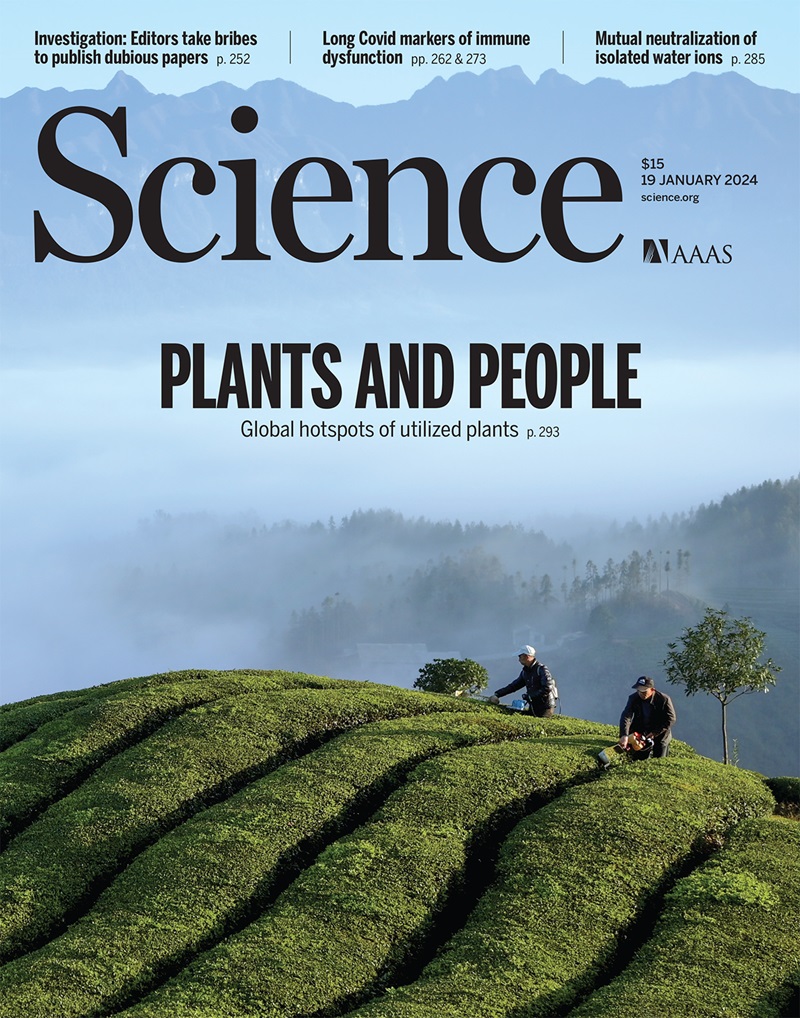A Chemically Functionalizable Nanoporous Material [Cu3(TMA)2(H2O)3]n
IF 44.7
1区 综合性期刊
Q1 MULTIDISCIPLINARY SCIENCES
引用次数: 4590
Abstract
Although zeolites and related materials combine nanoporosity with high thermal stability, they are difficult to modify or derivatize in a systematic way. A highly porous metal coordination polymer [Cu3(TMA)2(H2O)3]n(where TMA is benzene-1,3,5-tricarboxylate) was formed in 80 percent yield. It has interconnected [Cu2(O2CR)4] units (where R is an aromatic ring), which create a three-dimensional system of channels with a pore size of 1 nanometer and an accessible porosity of about 40 percent in the solid. Unlike zeolites, the channel linings can be chemically functionalized; for example, the aqua ligands can be replaced by pyridines. Thermal gravimetric analysis and high-temperature single-crystal diffractometry indicate that the framework is stable up to 240°C.
可化学功能化的纳米多孔材料[Cu3(TMA)2(H2O)3]n
尽管沸石和相关材料兼具纳米多孔性和高热稳定性,但却很难对其进行系统的改性或衍生。一种高多孔金属配位聚合物[Cu3(TMA)2(H2O)3]n(其中 TMA 为苯-1,3,5-三羧酸酯)以 80% 的收率形成。它具有相互连接的[Cu2(O2CR)4]单元(其中 R 是一个芳香环),这些单元形成了一个三维通道系统,孔径为 1 纳米,固体中的可进入孔隙率约为 40%。与沸石不同的是,通道衬里可以进行化学官能化,例如,水配体可以被吡啶取代。热重力分析和高温单晶衍射测定法表明,这种框架在高达 240°C 的温度下都很稳定。
本文章由计算机程序翻译,如有差异,请以英文原文为准。
求助全文
约1分钟内获得全文
求助全文
来源期刊

Science
综合性期刊-综合性期刊
CiteScore
61.10
自引率
0.90%
发文量
0
审稿时长
2.1 months
期刊介绍:
Science is a leading outlet for scientific news, commentary, and cutting-edge research. Through its print and online incarnations, Science reaches an estimated worldwide readership of more than one million. Science’s authorship is global too, and its articles consistently rank among the world's most cited research.
Science serves as a forum for discussion of important issues related to the advancement of science by publishing material on which a consensus has been reached as well as including the presentation of minority or conflicting points of view. Accordingly, all articles published in Science—including editorials, news and comment, and book reviews—are signed and reflect the individual views of the authors and not official points of view adopted by AAAS or the institutions with which the authors are affiliated.
Science seeks to publish those papers that are most influential in their fields or across fields and that will significantly advance scientific understanding. Selected papers should present novel and broadly important data, syntheses, or concepts. They should merit recognition by the wider scientific community and general public provided by publication in Science, beyond that provided by specialty journals. Science welcomes submissions from all fields of science and from any source. The editors are committed to the prompt evaluation and publication of submitted papers while upholding high standards that support reproducibility of published research. Science is published weekly; selected papers are published online ahead of print.
 求助内容:
求助内容: 应助结果提醒方式:
应助结果提醒方式:


